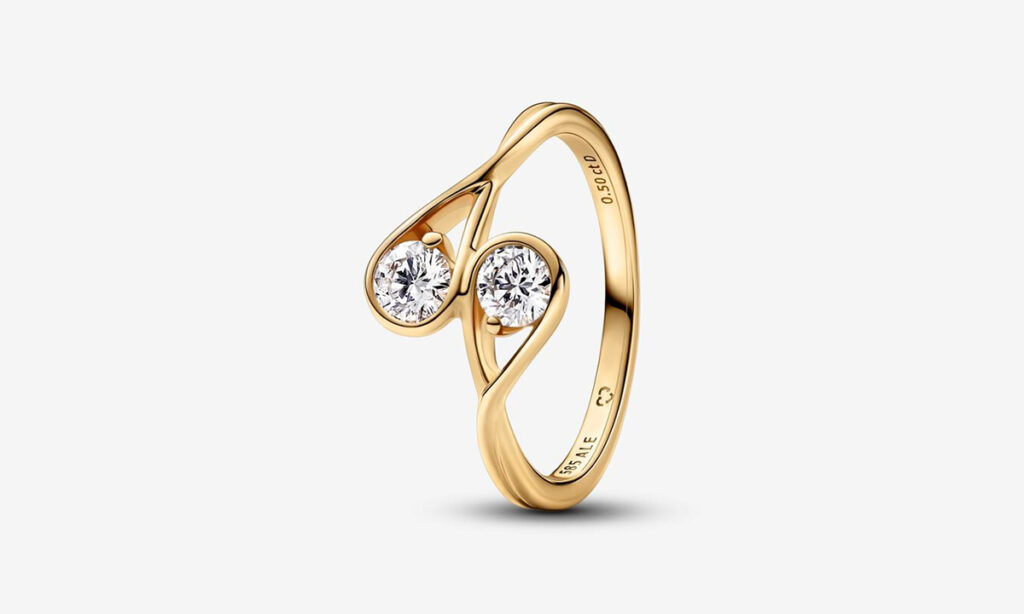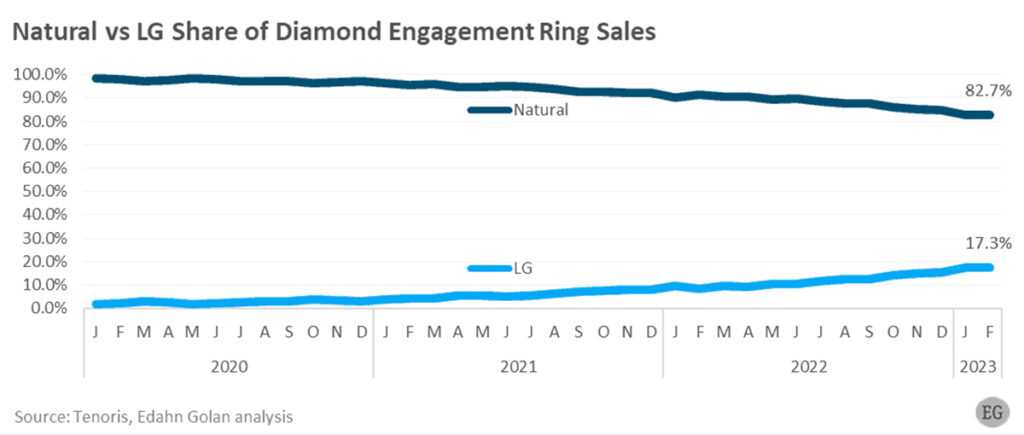Volcanoes are erupting in The Philippines, but on-fire Australia received some welcome rain. The Iran war cries have been called off and The Donald’s military powers are about to be hamstrung by the Senate. Meanwhile, his impeachment trial is starting, and we’re all on Twitter for a front-row seat.
What Could Go Right? Lab-Grown Diamonds Are Making It Big
An ethical, cheaper alternative indistinguishable from natural diamonds
This is our weekly newsletter, What Could Go Right? Sign up here to receive it in your inbox every Thursday at 5am ET. You can read past issues here.
Lab-Grown Diamonds Are Making It Big
Some may remember the film Blood Diamond, starring Leonardo DiCaprio, that helped mainstream the ethical problems of the diamond industry to the West. Set during Sierra Leone’s civil war, it showed how diamonds mined in conflict zones can finance war and enrich warlords.
The film ends with a nod to the formation of the Kimberley Process Certification Scheme in 2003, which certifies that a diamond is “conflict-free.” There are big loopholes in the certification, however, and it does not cover other human rights abuses that can occur during mining, including child or forced labor, exploitative working conditions, and physical and sexual violence.
A more recent concern is Russia. At the start of the year, G7 nations and the European Union sanctioned diamonds ($) mined there, which represent a third of mined diamonds worldwide.
There are ways to buy a diamond ethically. One good option is to buy from certain brands that trace every step of their supply chain and invest in the development of the nations where they are mined. Another option, possible for decades but not popular until now, is to buy a laboratory-grown one.

The first lab-made diamonds were produced by General Electric (GE) in 1954. At .00075 carats—an average engagement ring diamond is one carat—they were about the size of a grain of sugar and used to cut and polish glass, metals, and teeth.
GE was also the first to produce gem-quality diamonds in 1971, although the quality wasn’t high enough to sell as jewelry. They were yellow, and the process trapped impurities in them.
These downsides were fixed by the 80s and 90s, when it became possible to create lab-grown diamonds that, to consumers and sometimes even to gemologists, were indistinguishable from natural ones. These lab-grown diamonds are created using “diamond seeds,” slivers of diamond as thin as hair. The results are real diamonds, not imitations like cubic zirconia.
For years, they were too expensive to be commercially viable, at tens of thousands of dollars to produce one stone, estimates the International Gem Society (IGS). By 2008, that had fallen to $4,000 per stone, to a mere couple of hundred today.
It’s no surprise, then, that the lab-grown diamond market has exploded. In early 2023, over 17 percent of diamond engagement rings sold in the United States were set with lab-grown stones. That may not seem like much until you see that in 2020, the share was less than two percent:

Edahn Golan, whose company provides research analysis for the industry, thinks that lab-grown diamonds now make up more than half of all diamonds sold in the US. Globally, their market share will likely top 20 percent in 2024, another industry analyst, Paul Zimnisky, told the French outlet Agence France-Presse, to make it an $18 billion industry.
This shakeup isn’t an unmitigated good. Lab-grown diamonds rely on large amounts of electricity, so they will not be climate-friendly unless and until electricity is generated by clean power. (Pandora’s lab-grown diamond collection, pictured above, uses only renewable energy.) Some African nations, like Botswana, rely heavily on legitimate natural diamond exports, whereas China, the US, and India dominate the lab-grown diamond market.
For the consumer, though, the deal is hard to resist: you can buy lab-grown diamonds double the size of natural ones for about the same price, and with a clearer conscience.
What Could Go Right? S5 E19

Are our fears about the future grounded in facts on the ground today? Will conflict and war wax or wane this century? And what global progress can we look to as examples of unexpected good occurring? Today, for our season finale, Zachary Karabell and Emma Varvaloucas reflect on lessons gleaned from this season’s episodes. | Listen now
By the Numbers
621K: The number of solar panels used to power this year’s Super Bowl. The stadium was 100 percent powered by renewables.
97: The percent of China’s rural population who were living in extreme poverty in 1981, versus the less than one percent today.
1 in 5: The share of stay-at-home American parents who are fathers, a 63.6 percent increase since 1989. (NYT $)
Quick Hits














TPN Member Originals
(Who are our Members? Get to know them.)
- We need to see more Joe Biden | Slow Boring | Matthew Yglesias
- Trump’s controversial NATO comments | Tangle | Isaac Saul
- What to do if the course of true love is not running smoothly | The Atlantic ($) | Arthur C. Brooks
- The cure for what ails our democracy | NYT ($) | David Brooks
- Good news: We know how to accelerate the US economy | Faster, Please! | James Pethokoukis
- Sam Altman’s big, bad idea | Nonzero | Robert Wright


